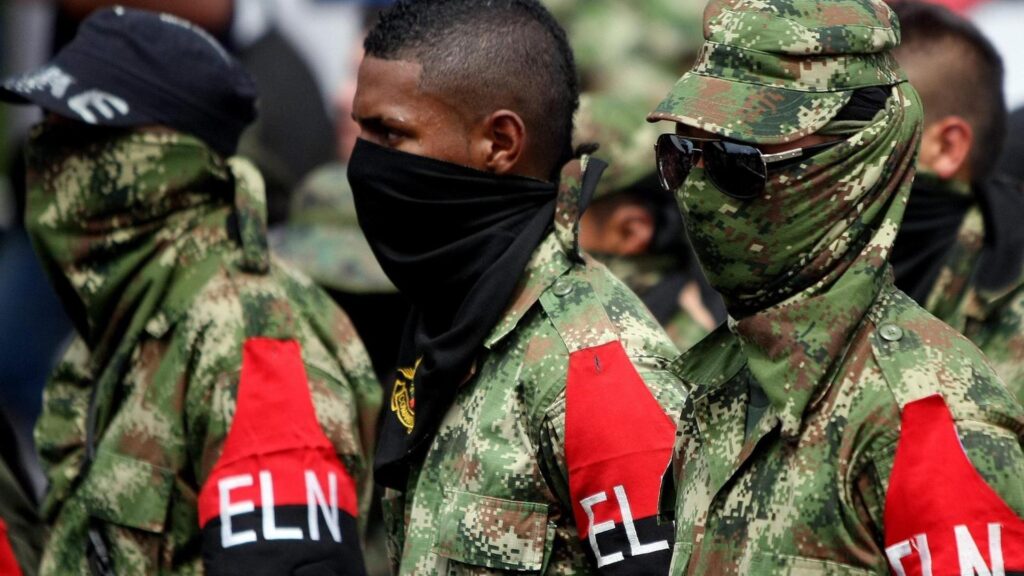In a significant escalation of hostilities in Colombia, the National Liberation Army (ELN) has reportedly adapted drone technology to specifically target the country’s security forces. This alarming development underscores the ongoing challenges faced by the Colombian government in its fight against armed groups and raises questions about the evolving tactics employed by these insurgents. The use of drones by the ELN not only marks a shift in their operational capabilities, but also highlights the increasing sophistication of non-state actors within the region. As tensions rise and violence escalates, experts warn that this new strategy could have profound implications for national security and pave the way for more complex confrontations between the state and this guerrilla group. In this article, we delve into the implications of the ELN’s drone modifications and their potential impact on Colombia’s security landscape.
ELN Enhances Drone Capabilities for Tactical Advantage Against Security Forces
The National Liberation Army (ELN) has taken a significant step in modernizing its tactics by enhancing the capabilities of its drones, marking a notable evolution in the ongoing conflict with Colombia’s security forces. The modifications reportedly involve the integration of advanced surveillance systems, allowing for increased reconnaissance and targeting precision. This upgrade aims to give the ELN a clearer operational advantage by enabling them to monitor troop movements and identify strategic targets with greater accuracy. Key features of the revised drone technology include:
- Improved Payload Capacity: Enhanced capability to carry equipment, possibly including explosives and surveillance gear.
- Extended Flight Range: Upgrades to battery life for longer missions over critical areas.
- Covert Operation Modes: Adjustments to reduce detection risks during surveillance activities.
The implications of these advancements cannot be understated, as they may shift the balance of power in localized engagements between ELN operatives and government forces. In response, security analysts suggest that Colombian defense strategies will need to adapt rapidly to counteract this new threat. The growing use of drone technology for tactical advantages raises questions about the evolving nature of warfare in the region, as traditional armed confrontations give way to more strategic, technology-driven operations. Furthermore, events such as increased reconnaissance and targeted strikes on security installations could lead to heightened tensions in areas where the ELN operates.
Implications of Drones on Colombia’s National Security Landscape
As Colombia grapples with the evolving threat landscape posed by groups such as the ELN, the adaptation of drone technology has significant implications for national security operations. The use of modified drones not only enhances the operational capabilities of insurgent factions but also challenges the effectiveness of government security measures. For the Colombian armed forces, this innovation translates into a need for rapid technological advancements and strategic adaptations, necessitating an approach that incorporates both technological and intelligence enhancements. Key areas of concern include:
- Increased Risk to Personnel: Drones can be deployed with precision to target troops, increasing the potential for casualties.
- Evasion Tactics: The ability of drones to operate in remote areas may allow insurgent groups to evade traditional surveillance measures.
- Resource Allocation: The need for enhanced counter-drone technologies will require a significant reallocation of military resources.
The escalating use of drones also poses broader implications for international partnerships in Colombia’s security strategy. As the Colombian government seeks support from global allies, the effective counteraction against such evolving threats will be paramount. This situation brings forth discussions about:
- Intelligence Sharing: The importance of real-time intelligence collaboration between nations to counteract drone capabilities.
- Military Aid Programs: Potential reforms in military assistance to include training for drone detection and interception.
- Policy Development: The necessity for updated regulations and policies addressing drone warfare on both domestic and international fronts.
Strategies for Counteracting Drone Warfare in Urban Environments
Drones have transformed the landscape of modern warfare, particularly in urban settings where traditional military tactics often fall short. In response to the growing threat posed by modified drones, security forces must adopt a multi-faceted approach to counteract their effectiveness. Key strategies include:
- Enhanced Surveillance Systems: Utilizing advanced surveillance technology to monitor drone flight patterns can help identify threats before they strike.
- Integrated Defense Systems: Deployment of electronic warfare systems designed to intercept and disable malicious drones can safeguard critical areas in urban environments.
- Community Engagement: Involving local communities in reporting suspicious drone activity fosters a shared sense of responsibility and can provide valuable intelligence.
- Training and Preparedness: Regular training exercises for security personnel on drone threat assessment and response can ensure swift and effective action during incidents.
Furthermore, collaboration between government entities and technology firms can yield innovative solutions to mitigate the risks associated with drone warfare. By investing in research and development of counter-drone technologies, security forces can create robust defense mechanisms tailored specifically for densely populated areas. A potential framework for this collaboration may involve:
| Stakeholder | Role |
|---|---|
| Government Agencies | Policy formation and funding |
| Technology Companies | Development of counter-drone solutions |
| Local Communities | Active participation and reporting |
By harmonizing these efforts, urban centers can significantly enhance their preparedness against the evolving tactics of drone warfare, ensuring the safety and security of both their citizens and security forces alike.
The Way Forward
As the conflict in Colombia continues to evolve, the ELN’s recent modifications to drone technology mark a significant escalation in tactics against security forces. This development raises urgent questions about the implications for national security and the ongoing efforts to stabilize the region. Authorities are now tasked with not only countering this advanced form of warfare but also addressing the underlying issues that fuel such violence. As Colombia navigates these complex challenges, the enhancement of drone capabilities by non-state actors like the ELN highlights the pressing need for comprehensive strategies that encompass both military responses and long-term peace-building initiatives. The situation remains fluid, and vigilant monitoring of developments will be crucial as the nation confronts this new chapter in its conflict landscape.
